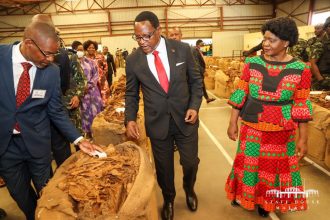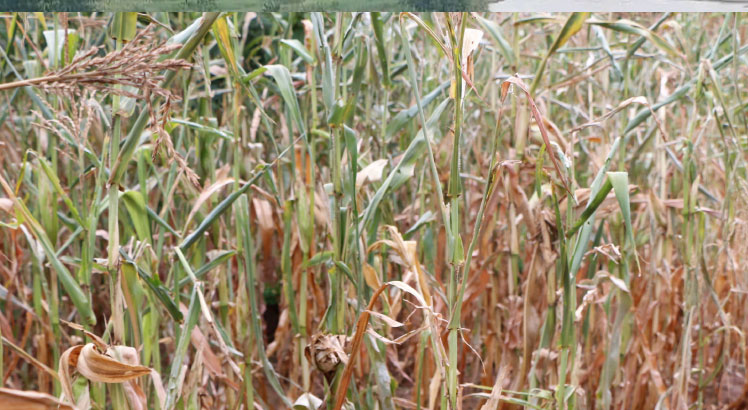Tapping into the unbanked community

On a sweltering afternoon of December 10 2013, members of Grace Village Bank in Karonga are seated under a tree, with smiles all over their faces, sharing K3.3 million they saved this year.
Each person, in a group of 26 members, smiled home with about K300 000. This is the story in most village banks.
They are usually seated under a tree, in a group of 15-30 members, mobilising savings ranging from K100 to K5 000 once in a week. Then they lend each other according to one’s shares in the group.
After a period, of say, one year, they gather again on the shades, this time, with smiles all over their faces, just as Grace Village Bank did, sharing millions of kwachas they saved in that particular year.
Mary Mwafulirwa, who is also the chairperson of Grace, got the highest of the shares with K350 000.
“Before I joined the group, I was doing tomato business with a capital base of K5 000. It was not easy to feed my family with such a small scale business. That’s when I thought of joining the village bank so that I may have an opportunity for loans,” explains Mwafulirwa.
“I bought shares of K5 000 so that I should be able to get a loan three times my shares. Within a year, my shares accumulated to K280 000, and I was able to get a loan three times that money. I opened a shop, I also ventured into second hand clothes (kaunjika) business,” she says.
Mwafulirwa, while boasting that she now owns an electrified house, says: “Six of us from the group have now built bricked-houses.”
Naomi Munthali from the same group is proud of the chicken business she invested her money into.
“I supply chicken to restaurants and individuals. My business has grown so much that I am now able to feed my family and pay school fees for my children,” she says.
One thing that differentiates this group from other village savings and loan (VSL) groups is that all members of Grace have accounts with Tikwere Community Sacco at Uliwa Trading Centre in the district.
Malawi Union of Savings and Credit Cooperatives (Muscco) business development coordinator for the North Ezekiel Thindwa says they have developed a programme called Group Savings Loan Associations Programme (GSLAP) which links village banks to their community Saccos.
He says the programme seeks to give the villagers an opportunity to save their money when it is shared at group level. This, he says, creates financial independence for individuals.
“We noticed that although the village banks have become common in most communities, they lack sustainability. Group members mobilise a lot of money within a specified period of time, share among themselves and spend.
“This creates a cycle whereby most members do not graduate into independence. In most cases, the groups fail to sustain themselves when NGOs [non-governmental organisations] bankrolling such projects phase out in communities,” observes Thindwa.
Muscco, an umbrella body of the Savings and Credit Co-operatives (Sacco) in the country, has seven Saccos in the Northern Region—Tikwere (formerly known as Karonga Teachers Sacco), Phindu, Rumphi, Mzuzu University (Mzuni), Kawiluwilu, Chikangawa and Mzimba.
Of these, GSLAP is being implemented in Chikangawa, Phindu and Tikwere community Saccos.
Tikwere Community Sacco vice-president Khwimanga Kumwenda says his Sacco has a total of 76 village banks. He says members in all these groups are affiliated to Tikwere Sacco, and membership keeps on increasing.
“This is because we don’t deduct service commissions as established banks do. We also give them an interest of eight percent of the money they save with us.
“Members are also interested on the loans we offer to our clients if they want to venture into large scale businesses,” he says.
With the 2008 Reserve Bank of Malawi (RBM) survey indicating that only 19 percent of Malawians are banked and a meagre three percent access insurance services, the GSALP could as well be a solution to tap into the unbanked community. GSALP targets poor villagers who contribute to 65 percent of the country’s population.
However, a recent informal survey RBM conducted indicates that the percentage of Malawians who are bankable has jumped to 28 percent and this is attributed to government’s directive that all employees should be getting their salaries through banks.
RBM has since put up a financial literacy week to raise awareness on financial products and services after noticing that lack of this is impacting negatively on the economy of the country.
“Lack of financial awareness has led to low saving culture in Malawians. Only 30 percent of the money released by RBM is banked, leaving a whopping 70 percent in people’s pockets,” RBM’s financial literacy and consumer protection manager, Lanjesi Sinoya, told Business News recently.
Financial literacy week, a pilot programme, will help address this by providing awareness on banking, microfinance, savings and credit cooperatives, industry and capital market.
However, Thindwa suggests that the village banks programmes need to be extended into other communities and be linked to saving institutions—such as established banks or Saccos—to increase the banked community.
“But, financial knowledge by these communities will be crucial if they are to make informed decisions. That’s why we train them in business management, group dynamics, Sacco philosophy, Sacco governance and corporative principles,” he says.





